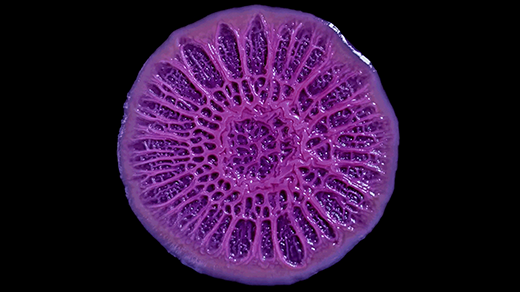Biologists Discover Unknown Powers in Mighty Mitochondria
Introduction
Of all the organelles to be found inside eukaryotic cells, the DNA-sheltering nuclei might be the best-known, but the mitochondria are surely not far behind. Mitochondria are familiar as bean-shaped structures floating in the cytoplasm, and they are almost inevitably referred to as “powerhouses” of the cell because they generate adenosine triphosphate (ATP), the fuel for most metabolic processes. For more than a century, biologists believed that energy production was their only role.
But that simple picture of mitochondria is turning out to be shockingly incomplete.
Mitochondria may look static and uniform in textbooks, but as researchers recognized early on, in reality the organelles change shape constantly through cycles of fusion (in which they combine and elongate) and fission (in which they split and shrink). They form highly dynamic, short-lived tubular networks threading throughout a cell. Recently, it has become clear that mitochondria also perform signaling and regulatory functions that are only indirectly related to their job as energy providers. In the past few years, research has revealed that one of their key roles is in controlling the development and ultimate role of stem cells.
Now scientists at the University of Ottawa in Canada have provided evidence that the morphing shapes of mitochondria powerfully influence neurogenesis, the development of neurons. In making this discovery, the scientists have pieced together a connection between the organelle’s shape transitions and how it carries out its signaling functions.
Mitochondrial Signals
The first hints that mitochondria had a broader repertoire emerged in the mid-1990s. In one early study, researchers at Emory University and the University of Minnesota investigated apoptosis, the process of programmed cell death that eliminates cells from tissues as a normal part of growth and development. They found that cytochrome c — a protein essential to ATP production — was crucial to this process. Their work also indicated that, at least in principle, mitochondria might be able to trigger cell death by releasing the cytochrome c they housed into the surrounding cytoplasm.
According to Navdeep Chandel, a professor of biochemistry and molecular biology at Northwestern University, this was an aha! moment for mitochondrial biology, because it suggested that the organelles could generate signals to control other cellular processes.
The study propelled Chandel, then at the University of Chicago, and his colleagues to examine whether mitochondria could release other signals as well. Those investigations led to a discovery a couple of years later involving the reactive oxygen species (ROS) — unstable molecules containing oxygen, such as peroxides, singlet oxygen and hydroxyl radicals — that mitochondria release while making ATP. Under oxygen-deficient conditions, they observed, mitochondria produced higher levels of ROS, and the excess molecules exited into the cytoplasm, where they would aid in the expression of proteins that helped the cells survive.
Since then, Chandel and others have shown that mitochondrial ROS signaling is important in diverse processes. One crucial role that has emerged is in promoting the differentiation of various types of stem cell, including those for blood and fat cells — and, most recently, for neurons.
Drivers of Stem Cell Fate
For stem cells, the primary means of producing energy is glycolysis, a process that generates ATP in the cytoplasm, rather than oxidative phosphorylation, the mitochondria-dependent method preferred by most mature, specialized cells. Why the cells differ in this way is not known: It may have something to do with the rate or byproducts of each process. But whatever the reasons, for a long time that difference obscured the role of mitochondria in stem cells, says Mireille Khacho, a cell biologist at the University of Ottawa.
Stem cells can perpetually “self-renew” or make younger replacements for themselves. But if they instead differentiate into specific lineages, they shift their primary source of fuel from glycolysis to oxidative phosphorylation. Because the latter process generates more ATP, scientists initially believed that the cellular transformation must have high energy requirements that mandate the transition.
This thinking began to change in the early 2010s, however, when findings from a handful of papers suggested that the mode of metabolism can directly influence decisions about cell fate.
In one key paper from 2011, researchers studied how to reprogram adult cells to become induced pluripotent stem cells, which, like embryonic stem cells, can proliferate and mature into almost any cell type. They revealed that for this transformation to occur, the cells had to shift from oxidative phosphorylation to glycolysis. Moreover, they observed that the expression of proteins involved in mitochondrial energy production decreased before the expression of those involved in pluripotency increased — an indication that the metabolic switch might be what initiates the cells’ transformation.
Until that revelation, most stem cell biologists had been focused on the genetic and epigenetic modifications that control the cell identity transitions, says Clifford Folmes, a mitochondrial researcher at the Mayo Clinic in Phoenix, Arizona, who was one of the co-authors of that study. But that paper and others like it have made a case that changes in mitochondrial function may actually be key drivers of the process.
Pinpointing a Role in Neurogenesis
The discovery that mitochondria might control the reprogramming of cells drove Khacho and Ruth Slack, her postdoctoral adviser at the University of Ottawa, to further investigate the role of the organelles in neuronal stem cells.
Ample evidence already suggested that mitochondria are important for brain function: Not only are neurodevelopmental problems common consequences of many mitochondrial disorders, but several studies in both humans and animals have linked defects in mitochondrial fusion and fission with neurodevelopmental disorders, such as autism, and with neurodegenerative diseases, such as Alzheimer’s and amyotrophic lateral sclerosis (ALS).
In 2016, Slack, Khacho and their colleagues reported the first evidence that mitochondrial shape-shifting is a key regulator of neural stem cell fate, the decision to self-renew or differentiate. By deleting genes that encoded key proteins for the fusion and fission machinery in mice, they discovered that a deficiency in fusion proteins reduced neural stem cells’ capacity to replenish themselves and encouraged the cells to become neurons. A loss of fission proteins, on the other hand, stimulated the stem cells to self-renew.
Their work showed that changes in the shape and architecture of mitochondria are among the earliest, most “upstream” signals to determine which way neural stem cells will go.
Given the previously established link between alterations in the fission and fusion machinery and neurodegenerative disorders, the team also investigated whether disrupting mitochondrial dynamics could alter the production of new neurons. When they knocked out fusion proteins in the brains of fully grown mice, they discovered that this disruption of the shape-shifting process reduced the number of new neurons produced in the animals’ brains and led to impairments in memory and learning.
Genetic defects are also known to alter mitochondrial fission and fusion in humans, but the idea that they might particularly influence stem cells hasn’t really been explored yet, Slack said. “What we’re working on now is trying to find new ways, through dietary or pharmacological means, to improve mitochondrial function in stem cells so we can maintain optimum learning and memory for as long as we can.”
Alessandro Prigione, a stem cell scientist at the Max Delbrück Center for Molecular Medicine in Germany, acknowledges that several studies — including his own — point to the importance of mitochondria in neuronal cell fate. However, he adds, it’s too early to tell exactly how mitochondrial shape controls neurogenesis. “I think fission and fusion matter,” he said, but mitochondrial morphology is just “one piece of the puzzle.”
Prigione also advises caution in drawing conclusions about humans based on results from studies of neurogenesis in rodents. This is a particularly important consideration in studies conducted in mature animals, he says, because the question of whether the adult human brain generates new neurons at all is still a matter of debate.
Other research groups have also found that mitochondrial shape-shifting controls the fate of stem cells, but there seem to be notable dissimilarities across the array of stem cell varieties and experimental conditions. Studies on most types of stem cells show that their mitochondria are sparse and fragmented, but that they progressively elongate as the cells differentiate. Prigione’s experiments, for example, found this to be the case with human neuronal cells in culture. But Slack and Khacho saw the opposite in neural stem cells from rodents: In their work, mitochondria start off elongated in the stem cells, then become fragmented in progenitor cells (which are more committed to a specific cell fate) before becoming elongated again as they differentiate into neurons.
The real significance of Slack and Khacho’s work in neural stem cells might be that the mitochondria’s role in neurogenesis relates to something more dynamic than shape alone. According to Khacho, it’s likely that what matters isn’t the organelles’ form in a cell at a given moment, but rather their ability to morph through fission and fusion. Fission and fusion are happening all the time, and so far, scientists have only been looking at snapshots of this process. “Perhaps it’s the plasticity, the ability to change,” Khacho said. “That’s the important thing.”
Mitochondrial dynamics are clearly important for stem cell function in general, according to David Chan, who leads a lab that studies them at the California Institute of Technology — but the dynamics are especially complicated in neural stem cells. “I guess right now, the simple answer would be that neuronal cells are just different,” he said.
From Powerhouses to Signaling Centers
Exactly how mitochondrial shape-shifting can control decisions about cell fate is an open question.
Findings from Slack, Khacho and their colleagues suggest that changes in mitochondrial structure could modify the amount of ROS in cells. They’ve shown that fission and fusion can control levels of ROS, which can in turn regulate the decisions of stem cells to proliferate or differentiate.
“What they found is something interesting,” Chandel said. “The same ROS signaling that we’ve been talking about for 20 years happens in neurons, and mitochondrial dynamics can control that.”
But ROS is probably only part of the answer. Mitochondria can communicate with the cell in many ways, such as through the generation of other metabolites, the release and uptake of calcium, and changes in membrane potential. “Any signaling molecules that result from metabolic changes — and there are many, many molecules — could be important,” Slack said.
Moreover, it’s unlikely that the same mitochondrial signals control the fate of different stem cell types. “We know that [mitochondria] participate in a number of differentiation processes,” said Luca Scorrano, a biochemist at the University of Padua in Italy. But “as soon as we look into the specificity of the mitochondrial participation … we see that the signaling cascades which are regulated by mitochondrial dynamics are not necessarily the same.”
Both Slack and Khacho are searching for other mitochondrial metabolites that might be involved in stem cell fate. Khacho, who now leads her own lab at the University of Ottawa, has moved on from neural stem cells to ones for muscle, and she hopes to identify similarities in mitochondrial dynamics and ROS signaling in another cell type. “I wanted to see: Is there another stem cell population that is utilizing mitochondria the same way?” she said. “Then I’m hoping to take it beyond that and try to identify the mechanisms of how that’s happening.”
“I think it’s an area that’s going to get a lot more interest,” Slack said. “The fact that mitochondria can signal to the nucleus and alter the fate of the cell, I think, really is important.” And because so many of the signals themselves seem to be metabolite molecules, scientists should potentially be able to manipulate them easily to alter the fates of cells or to revitalize depleted stem cell populations. “That’s why we’re excited.”



